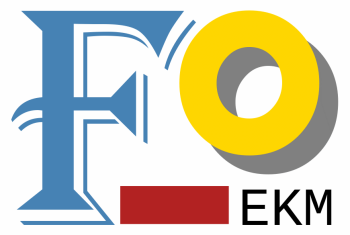
Research direction coordinated by: Nikolay Kuznetsov, Nikolai Anisimov
Of the cultures of the Finno-Ugric peoples during this period, special attention is paid to the Komi, Ersyas-Mordovians, Udmurts, Vepsian culture, etc. Research on the beliefs, mythology and folklore of the Finno-Ugric peoples is carried out in cooperation with our partners from the University of Tartu, the Estonian Academy of Music and Theatre and INALCO (Paris, France). Important players in this process are our active scientific colleagues — Professor and anthropologist Eva Toulouze, as well as Liivo Niglas.
Of particular importance are years of scientific ties with scientists studying the areas of Finno-Ugric peoples. In cooperation, we develop the science of Finno-Ugric folklore, exchange experiences and work together in research areas that contribute to an in-depth understanding of the interrelations between Finno-Ugric languages and cultures, new perspectives have been jointly developed, e.g. the problem of visual documentation (Traditional culture in the camera lens; https://www.folklore.ee/rl/fo/konve/2023/film and https://folklore.ee/rl/fo/konve/2022/uvisual)
We have 50 years of publishing experience in Finno-Ugric languages, but close cooperation has taken place over 20 years. (Poster presentation PDF)
In recent years, cooperation with Udmurt scientists has been especially active, with whom we analyze topical issues in the field of Udmurt folklore and mythology. Among them are Galina Glukhova, Nadezhda Shutova, Elena Popova, Irina Pchelovodova, Irina Nurieva. Until 2024, Tatiana Vladykina, who was closely associated with the University of Tartu and Estonia, made a significant contribution to the development of friendly and partnership relations in the study of Finno-Ugric cultures.
Our researchers maintain close relations with the Finno-Ugric diaspora in Estonia — they conduct fieldwork, actively cooperate and participate in cultural events. Such cooperation will help strengthen scientific contacts and deepen the study of the cultural heritage of Finno-Ugric peoples.
LANGUAGE ECOLOGY – how close and distant languages influence each other, how they are influenced by other Finno-Ugric languages, including Estonian and Finnish, as well as larger languages such as Russian, German and English. In addition to basic research, applied research is carried out, including the development of translation theory and practice of Finno-Ugric poetry. (All project members, cooperation with language and cultural centres in Finland, etc.).
THE CULT OF THE ANCESTORS IN THE WORLD PICTURE OF THE UDMURTS: SOCIAL AND PERSONAL ASPECTS The aim is to understand modern processes concerning the persistence of the cult of ancestors with all its manifestations in Udmurt folk culture and practice, both ritual and intimate. The cult of ancestors is one of the most durable elements in culture, as can be seen in world cultures and anthropological studies. My hypothesis is that although Udmurts are well integrated into global cultural processes, their worldview and life are nevertheless structured by constant interaction with the dead, and it is the visible and invisible aspects of this that the topic explores. I try to understand the mechanisms that work, and I rely, first of all, on 17 years of fieldwork and also on the fact that I myself am the bearer of the same culture. Nikolai Anisimov, Tatiana Anisimova.
WINTER IN FINNO-UGRIC CULTURES – the focus is on the representation of winter in Finno-Ugric cultures. Winter is a basic concept without which it is difficult to imagine Finno-Ugric cultures. Winter determines the forms of living, attitudes and behavior patterns, daily practices and religious rituals, etc. of culture bearers more than other seasons. The plan is to study the image of winter primarily based on folklore materials. The necessary material is collected and systematized, sources are mapped, representative texts are selected, the depiction of winter and its impact on customs, attitudes, etc. are analyzed, and the linguistic component is also worked on. Articles and/or monographs are prepared to present the results: Natalia Ermakov, Nikolai Kuznetsov, Sergey Troitskiy.
ARRANGEMENT AND PUBLICATION OF ERSYA’S COLLECTIONS. With the research scholarship, an overview of the Ersya (Mordovia) material in various institutions in Estonia (EKI, EKM, ERM, EMTA, EKA) will be completed. For the first time, the materials of V. Danilov (an eminent linguist who worked in Estonia and recorded more than 2,500 pieces), as well as the personal recordings by N. Ermakov and the materials collected from members of the Estonian-Mordovian Society, are becoming available. In addition, a multilingual website will be created combining Ersya language and culture data, dictionaries, books in Ersya, Russian, English, Estonian. The material is opened online in an organized manner in the agreed volume. Natalia Ermakov.
